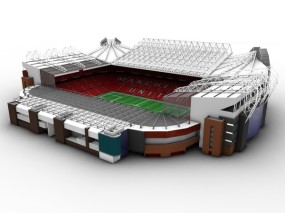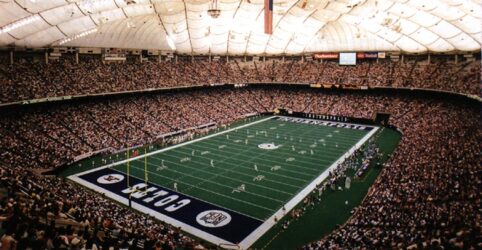Whether it is for a new or an existing venue, a stadium master plan creates a holistic plan for stadium development. The master plan assesses both present and future needs so that a proper facility can be constructed that will not be outgrown prematurely. When it is an existing stadium that is being modified, such a plan may include proposals for increased seating, new commercial areas and even roof additions. It is not uncommon for new skyboxes and VIP areas to be added to increase long-term revenue. The stadium master plan may also address current deficiencies in player facilities, stadium accessibility and parking. Also, the media may be better accommodated with improved broadcasting and related facilities.
A comprehensive master plan coordinates everything so that design and construction proceed in an efficient manner. Varying aspects of the project can be coordinated in a logical and cohesive way. The cost of every element in the master plan must be established. When costs are excessive, needs will have to be prioritized by the owner or other responsible party.
More Detailed Plans
Once it has been determined how much can be spent on a new or improved venue, specific characteristics of stadium design can be defined. Next, operational guidelines are provided for the stadium’s developer, contractors and consultants via four documents:
Stadium brief – describes in detail every dimension of the venue’s functionality
Design program – creates a time line for securing necessary approvals and for designing the facility
Building budget – each aspect of the cost of construction is detailed
Construction program – establishes a detailed time line for construction

The initial completion of a basic business plan and budget allows the process to move forward in greater detail. A highly detailed stadium brief will set forth specifications for the new structure. It will also specify dimensions and other requirements. Each section of the new facility is further defined through the creation of a detailed plan for the surface area of each.
Because this brief combines the client’s concrete objectives with a realistic appraisal of financial capacity, it becomes the main design document for the structure. It will set forth the overall size and capacity of the facility. It will therefore require that overall capacity be determined. The brief will also specify the kind of sports to be accommodated and the spectator amenities to be provided. Concessions, restaurants, retail shops and gaming areas will be identified. The document will also address general stadium access needs and parking facilities.
Realistically, the stadium brief will be subject to reevaluation and modification during the whole process. However, any future changes must remain within the project’s financial parameters.
Optimizing Capacity
The determination of stadium capacity is a real balancing act in stadium design. There need to be enough seats to fully accommodate paying customers on a consistent basis. However, excess capacity must be avoided. Large tracts of empty seats detract from the atmosphere and the fan experience. Such seating also represents a wasted investment.
Stadiums filled to capacity generate an electric atmosphere that makes the experience that much more memorable for those in attendance. Such fans are that much more likely to attend future matches, games or competitions. Unfortunately, there is no shortcut to correctly determining appropriate capacity. Numerous variables will enter in to the deliberations, including the anticipated success of the team and the potential for alternative uses of the venue.
Finally, many major sports organizations like FIFA stipulate minimum seating requirements for stadiums. These need to be taken into account if the new venue’s sponsors hope to attract major international competitions one day.
The construction of a new stadium or the improvement of an existing one requires a highly structured and coordinated effort. Overall goals must be carried out with detailed plans that must always keep the project’s budget in mind. Large stadium projects can be completed on time and within budget as long as a disciplined, step-by-step approach is adhered to.






